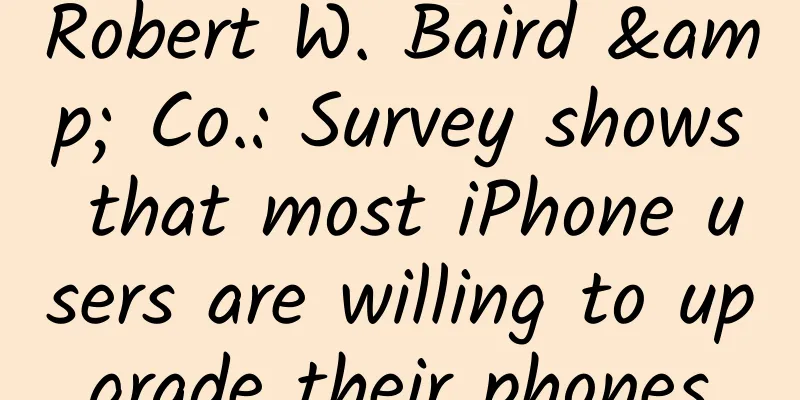Scoliosis: The many types you never knew about

|
Scoliosis: The many types you never knew about Scoliosis is a common spinal deformity disease. There are many widely recognized classification methods in the world. These classifications are crucial for accurate diagnosis, treatment plan formulation and prognosis assessment. The following are some of the main classification methods: King classification, Lenke classification, PUMC classification, Schroth classification, Rigo classification . Before treating scoliosis, you must first evaluate the type of scoliosis!!! King classification Idiopathic scoliosis is classified into five types based on the location of the curve, apical vertebra, severity of the curve, flexibility and compensatory curvature . King l : Both the lumbar curve and the thoracic curve exceed the center sacral vertical line (CSVL), and the Cobb angle of the lumbar curve is larger, and its flexibility is worse than that of the thoracic curve. About 13% of the cases have thoracic and lumbar curves that extend beyond the midline. "S" shape, with the waist curve larger than the chest curve Poor softness King Ⅱ : Both the thoracic curve and the lumbar curve exceed the CSVL, the Cobb angle of the thoracic curve is larger and its flexibility is poor. About 33% of the cases have thoracic and lumbar curves that extend beyond the midline. "S" shape, with the chest curve larger than the waist curve And the flexibility is less than the waist bend The stable vertebra is usually T11 or T12 or L1 King III : Single thoracic curve, with compensatory lumbar curve not exceeding CSVL. About 33% is the true thoracic curve The waist bend does not exceed the midline The lumbar curve is non-structural There is usually no rotation in the standing position when bending the waist King IV : Long thoracic curve, L5 is bisected by CSVL, L4 slopes into the long thoracic curve. About 9% of the total area is a long arc thoracic curve. The top vertebra is in the thoracic region, usually at T10 Lower terminal vertebra in lumbar region L4 slopes into this long thoracic curve The L5 is still located in the center of the sacrum despite its obvious uneven appearance. King V : Structural double thoracic curve, T1 tilted toward the concave side of the superior thoracic curve or the convex side of the inferior thoracic curve. About 11%, double chest curve For structural T6 is usually the junction of two curves 02 Lenke classification Lenke classification can be divided into the following three steps: The first step is to determine the type of scoliosis (6 types in total) based on the location of the primary scoliosis and the structural characteristics of the secondary scoliosis. Type I: main thoracic curve, the thoracic curve is the main curve, the proximal thoracic curve and thoracolumbar curve/lumbar curve are non-structural secondary curves Type II: Double thoracic curve, the thoracic curve is the main curve, the proximal thoracic curve is the structural secondary scoliosis, and the thoracolumbar curve/lumbar curve is the non-structural secondary scoliosis. Type III: Double main curves, the thoracic curve and thoracolumbar curve/lumbar curve are structural scoliosis, and the proximal thoracic curve is non-structural scoliosis. The thoracic curve is the main scoliosis, and its Cobb angle is greater than or equal to the thoracolumbar curve/lumbar curve, or the difference between the two does not exceed 5°. Type IV: Three main curves, the proximal thoracic curve, thoracic curve and thoracolumbar curve/lumbar curve are all structural scoliosis. The thoracic curve and thoracolumbar curve/lumbar curve may both be the main scoliosis. Type V: thoracolumbar curvature or lumbar curvature. The thoracolumbar curvature/lumbar curvature is the main structural scoliosis, while the proximal thoracic curvature and thoracic curvature are both non-structural scoliosis. Type VI: thoracolumbar curvature/lumbar curvature and thoracic curvature. The thoracolumbar thoracic/lumbar curvature is the main scoliosis, and its angle is at least 5° larger than the thoracic curvature. The thoracic curvature is a structural secondary scoliosis, and the proximal thoracic curvature is a non-structural scoliosis. In the second step, the lumbar curve is further revised into three types: A, B, and C according to the positional relationship between the sacral median vertical line (CSVL) and the lumbar curve. Type A : The CSVL passes between the pedicles on both sides of the lumbar vertebra below the stable vertebra. If there is doubt as to whether the CSVL passes through the pedicles on both sides, it is determined to be Type B. This type of scoliosis must also be accompanied by thoracic scoliosis with the top vertebra located at or above the T11/T12 intervertebral space. Type B : CSVL is located between the outer limit of the pedicle on the concave side of the lumbar spine and the outer edge of the lumbar vertebral body or intervertebral disc. If there is doubt as to whether CSVL touches the vertebral body or the outer edge of the intervertebral disc, it is determined to be type B. This type of scoliosis is also only seen in scoliosis where the top vertebra is located in the main thoracic spine, so it does not include thoracolumbar/lumbar scoliosis. Type C : CSVL is located outside the lumbar vertebral body or the outer edge of the intervertebral disc. The main scoliosis of this type of deformity may be located in the thoracic spine, lumbar spine and/or thoracolumbar segment. If there is doubt whether the CSVL contacts the vertebral body or the outer edge of the intervertebral disc, it is also determined to be type B. Type C may include all deformities with main thoracic scoliosis as the main scoliosis, and must include all thoracolumbar/lumbar scoliosis. In the third step, three types of thoracic curve correction were determined based on the characteristics of sagittal thoracic kyphosis (T5-12). T5-12 kyphosis angle less than 10° was considered negative (-), 10°-40° was normal (N), and greater than 40° was positive (+). 03 PUMC classification Ⅰ curve : IA thoracic curve (T2-T11-12), IB thoracolumbar curve (T12-L1), IC lumbar curve (L1-L2, intervertebral disc L4-5) Ⅱ curve : ⅡA: double thoracic curve, ⅡB: thoracic curve + thoracolumbar curve, thoracic curve is greater than thoracolumbar curve (lumbar curve) by more than 10 degrees (ⅡB1, ⅡB2, ⅡC, ⅡD) III bend : The distal bend of IIIA meets the conditions of IIB1, and the distal bend of IIIB meets the conditions of IIB2 Idiopathic scoliosis is classified into single, double or triple curves according to the number of vertices. At the same time, each curve is further divided into different subtypes, for a total of 13 subtypes. 04 Schroter classification Christa divides scoliosis into two categories: three-arc and four-arc. Simply put, three-arc means that the patient's spine has three arcs, one main arc and two compensatory arcs. The main arc refers to the spinal segment with the largest bending angle. Four-arc means that the spine has four arcs, two main arcs and two compensatory arcs. Usually there are scoliosis in the chest and waist. Four-arc usually means that the lumbar spine is tilted relative to the pelvis. The classification of scoliosis must be determined based on X-rays. Many four-arc compensations are very good and cannot be seen from the body surface during the bending test. The following figure shows a typical functional three arcs, in which the trunk is divided into three segments, namely: Shoulder straps, chest, waist and pelvis —Generally, the functional three arcs have a main curve, which appears in the thoracic segment or the thoracolumbar junction, and then there is a compensatory scoliosis above and below, with the thoracic segment and the lumbar plus pelvic segment pushing to the opposite side, that is, the direction of the thoracic scoliosis is opposite to the direction of the lumbar plus pelvic scoliosis. The convex side of the square, that is, the thick side of the wedge, rotates dorsally. The figure above shows the functional four arcs, in which the trunk is divided into four segments, namely: Shoulder straps, chest, waist, pelvis There are generally two main curves in the functional four-arc, in the thoracic and lumbar segments. The biggest difference between the functional four-arc and the functional three-arc is that it divides the pelvis and lumbar into two independent segments. These two segments are no longer a whole that pushes and rotates in one direction, but are divided into two independent plates that push and rotate against each other. The lumbar segment is convex to the concave side of the chest, and the pelvic segment is convex to the convex side of the chest. The convex side of the square, that is, the thick side of the wedge, rotates dorsally. 05 Rigo classification The Rigo classification is based on Schroth's three-arc and four-arc classifications and subsequent extended classifications. Rigo further refined the Rigo classification on this basis and used it to guide the design and fitting of the AIS Seno brace. It is a classification system specifically for conservative treatment of scoliosis. According to the observation of clinical signs of the back, it is divided into three arcs (three curve patterns; 3C), four arcs (four curve patterns; 4C), non-three non-four (non 3 non 4 N3N4) or single lumbar/single thoracolumbar curves (single lumbar and single thoracolumbar; L/TL). Then the imaging criteria are used for clinical subtyping diagnosis. The basic type of "3C" can be divided into A1, A2 and A3 subtypes; the "4C" type can be divided into B1 and B2 subtypes; N3N4 can be divided into C1 and C2 subtypes; L/TL can be divided into E1 and E2 subtypes. Scoliosis is defined according to the diagnostic criteria of the International Scoliosis Research Association: standing X-rays show that when the spine deviates from the midline and the Cobb angle is >10°, it is called scoliosis. The names of scoliosis include thoracic curvature, lumbar curvature, thoracolumbar double curvature, single lumbar curvature, single thoracolumbar curvature, etc. The apical vertebra is the vertebra or intervertebral disc that deviates the farthest from the midline and is in a horizontal position. The horizontal position of the apical vertebra determines the name of the curve: T2-T11 is thoracic curvature, T12-L1 represents thoracolumbar curvature, and L2-L4 represents lumbar curvature. Click on the blue words to follow us If you have any questions about scoliosis, welcome to consult us. Let us move towards health together! ! ! Based on the popular science project of Songjiang District - "Scoliosis Screening Promotion Activity" |
<<: I still feel pain after lumbar spine surgery. Is there any other solution?
>>: Shocking! Breathing can also correct scoliosis!
Recommend
Can I check my menstrual flow by checking six hormones?
Women's menstrual period comes for a few days...
How long does it take for a woman to ovulate after an abortion?
Abortion is extremely harmful to women's bodi...
What should I pay attention to when I have small pimples on my vulva?
The importance of women's physiological syste...
Recipes for women's warming and nourishing
For most women, due to study or work, they usuall...
In what cases should hysteroscopy be performed
Hysteroscopy is a method of examining and treatin...
Female urethral stones
Women with urethral stones need to be treated pro...
Can I take Chinese medicine if I have severe morning sickness?
Most women will have early pregnancy reactions to...
Female body heat but no fever
It is very common for the human body to have a fe...
Back pain at 38 weeks of pregnancy
Due to the changes in estrogen in pregnant women&...
Several treatments for mastitis during lactation
Mastitis is a common gynecological disease. The o...
What harm does having two abortions in half a year do to your body?
Today's friends are already open to the conce...
Is a gynecological examination painful?
With the change of life rhythm and habits, more a...
Do dumbbells for vaginal tightening work and make women happier?
After giving birth, women's vaginas will beco...
How to cut duck gizzards into flowers? How to deal with duck gizzards
Many friends have a special liking for food and l...
Cervical mucopurulent discharge
The presence of purulent secretions in cervical m...









